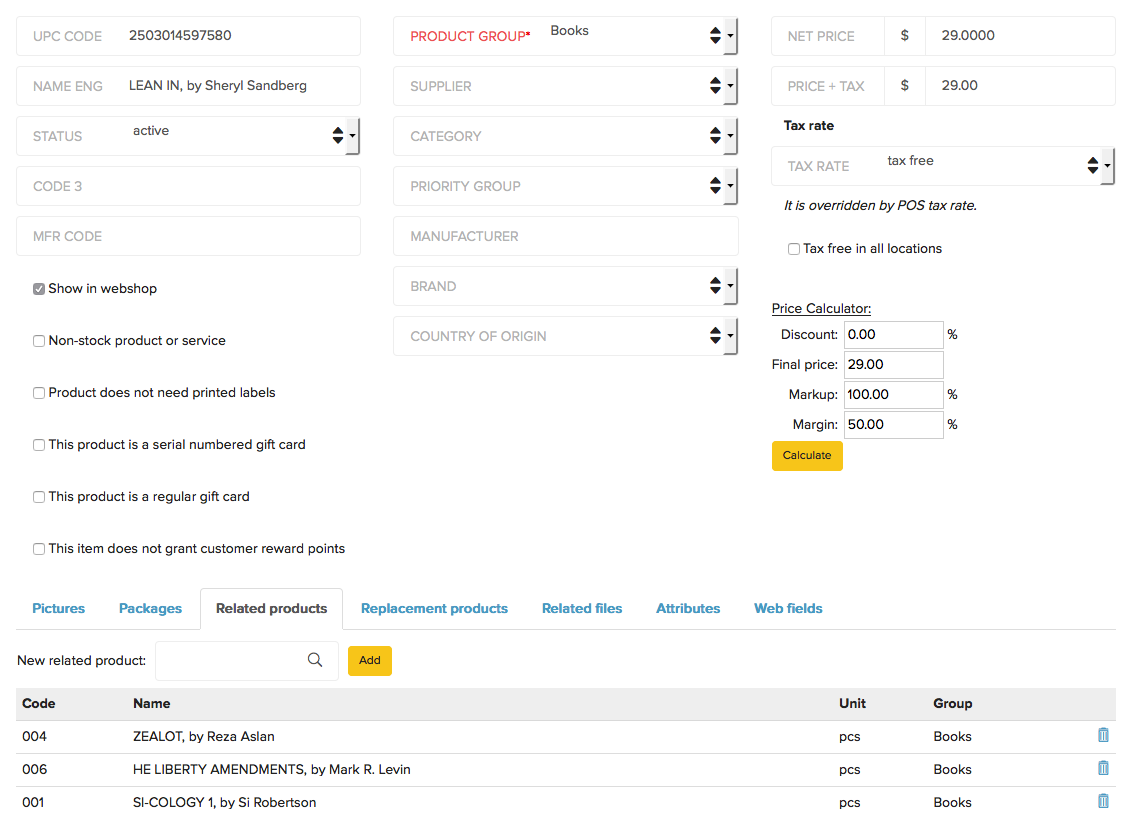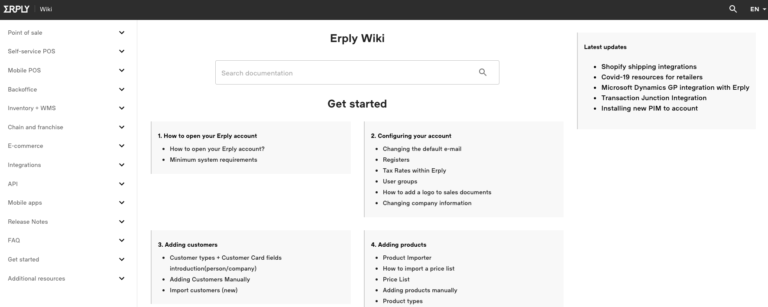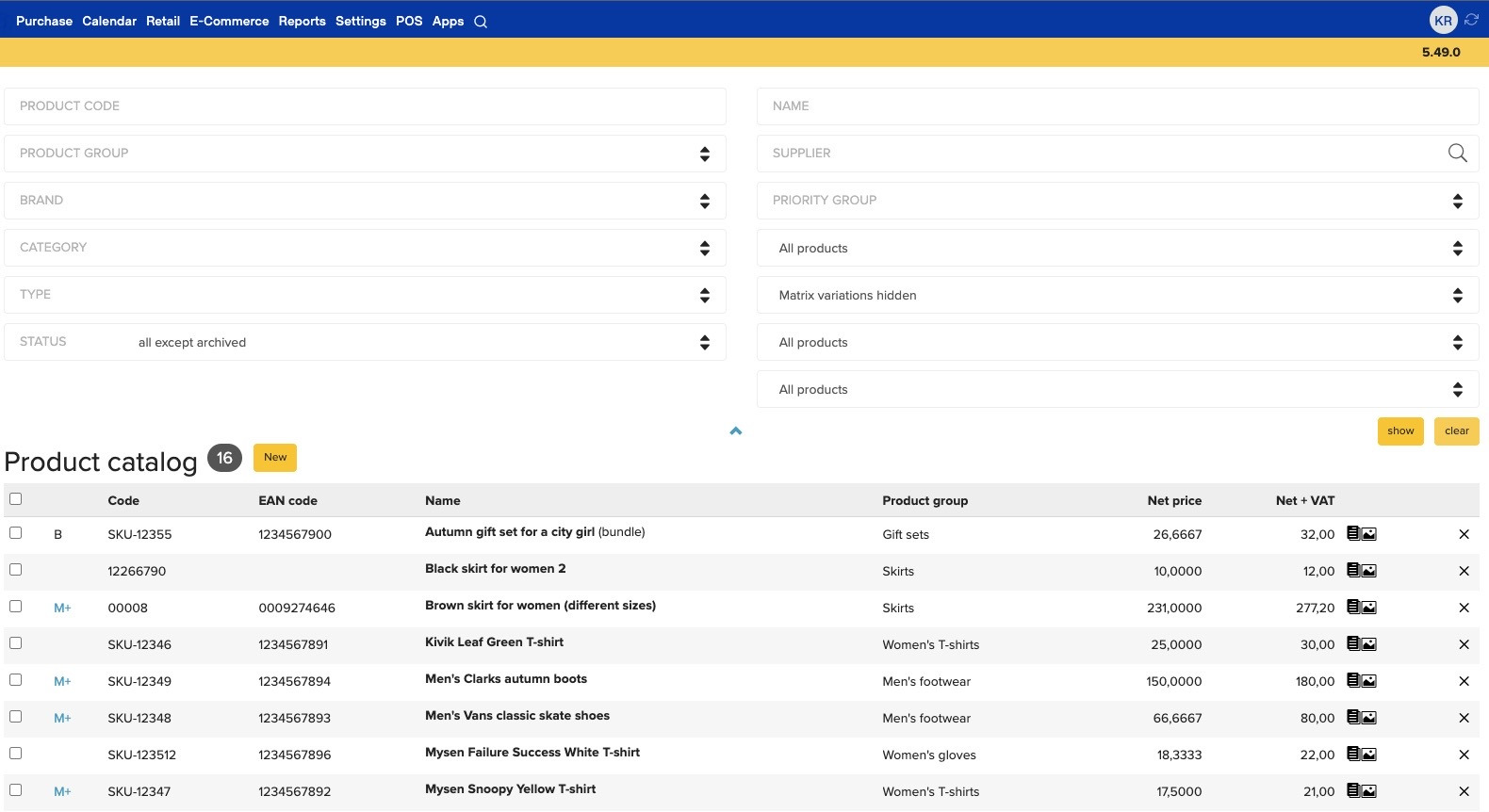In retail management, there are so many details about a product: pricing, SKU, barcode and QR, technical data like dimensions and weight, labels, advertising copy, photos and videos, suppliers, warehouse and retail stock, vendors, commissions, e-commerce. The faster your company grows, the more complex it will become to handle it all efficiently.
Research findings, published by Ventana Research, indicate that many organizations struggle to produce a single source of product information. For the retailer, the absence of a centralized product information repository can lead to severe losses. Therefore modern companies, especially the big retailers, opt for a shockingly obvious and underexploited measure. They implement Product Information Management software that provides a strong backbone for multichannel retail operations.

Using a Product Information Management (PIM) solution, all retail data, plus the back-office information, is distributed centrally to Enterprise Resource Planning, merchandising system, point-of-sale, warehouse, contact center, e-commerce, webpage or product catalogs, online and offline, cross-channel operations, franchises, partners, suppliers, and vendors. And it is constantly up to date.
1) No Time Wasted On Double or Multiple Data Entry
Your authorized staff has just one central interface to enter and update product info. From there, the product information goes automatically to numerous other systems, including warehouses, logistics, and suppliers.
2) Data Quality
Products descriptions, price lists, SKU and barcodes, product videos on e-commerce sites, and photos in printed catalogs form a perfect product image that is up to date. The most important, Product Information Management virtually eliminates business risks of mismatched prices and product details.
3) Improved Multichannel Sales
Retail is becoming multichannel. This means that for your customer, it should make no difference if she wants to buy in your supermarket, webstore or mobile commerce. The possibility to use several sales and marketing channels at the same time is also called an omnichannel approach. To put it shortly, if your product information is centrally managed, you can decentralize the sales while remaining in full control. More sales outlets mean your customer has more chances to buy from you.
4) Improved O2O Sales (Online To Offline Sales and Vice Versa)
Over 60% of global Internet users research products online (Interconnected World: Shopping and Personal Finance). There will be no inconsistency setbacks for customers who engage in pre-shopping. With a PIM system, it is much easier for a retailer to handle global loyalty and gift cards, discounts and pre-order policy. O2O is a rapidly growing trend in business to business (B2B), too; orders will be coming in both on spot, via the Internet and mobile purchasing.
5) Lightning Fast Product Launches
An all-inclusive Product Data Management system like Erply PIM has covers both the technical details and public image of your product, and the sales process. With a single central product information system, you can market your products much faster. It’s possible to fine tune an instant product launch in your retail chain outlets, E-commerce, and M-Commerce. Also, bundled deals and franchising are easy to handle. You can increase New Product Introductions (NPIs) and significantly reduce NPI Timelines.
6) Efficient Supplier Cooperation
Product Information Management is meant to increase the efficiency of supplier collaboration. A product or a product category has a record of contact persons, and a full overview of locations, delivery conditions and deadlines, inventory transfers, registrations, and write-offs. For Erply PIM, the data format is no obstacle, as it can effortlessly import and export any data format used in the retail industry.
7) Strategic Product Management
Product Information Management lets you monitor the real-time market performance of each product or service, so you can optimize purchasing, and lift procurement initiative where your buyers are. Having diverse product registers would make strategic decision-making near to impossible unless you have a single PIM solution that gives a big picture. Real-time analysis of critical data gives you a huge advantage for strategic planning and business process management. Improve operational business processes, big data, and analytics with a complete and flexible PIM solution.
Erply offers you an exceptional possibility to try a full-scale Product Information Management solution. Note that it is in perfect sync with integrated point-of-sale (POS) and Enterprise Resource Planning (ERP), featuring Inventory Management, Retail Management and Franchise Management.
To come to Erply PIM, there are some enhanced qualities to it that make it stand off the crowd of product master data management systems. Here’s a list of these features.
1) Hybrid Cloud System (Online and Offline Sales)
Erply PIM is a hybrid cloud system, so the product information is at your disposal even if there’s a trouble with an Internet connection or if you Point of Sale is not constantly hooked up to the Internet. The data is kept in highly secure servers, meeting criteria of best practices. The system is optimized for heavy use and lightning fast operation. Erply has large companies and international organizations like UNESCO on board, so we know how to handle big data.
2) Custom Interface
Erply PIM user interface can be configured to meet the needs of your enterprise or organization. We cover all aspects of Product Content Management (PCM) and Product Master Data Management (MDM). Erply PIM integrates well with warehouse and e-commerce solutions, or platform-based commerce channels like Amazon, eBay, or Facebook. Erply PIM provides the structure to maintain data integrity, and it conforms to your company’s unique needs.
3) Seamless Data Export and Import
Erply Product Information Management does not tie you to a certain file format. It’s OK if your suppliers, logistics provider, and other partners use different registers; the data import and export is easy, no matter if the needed format is a CSV, Excel, XML, image, video, or other data file. A plethora of formats is supported to smoothly integrate the operations and to syndicate master data to and from external systems.
4) Marketing Support
Product Information Management is a great tool for retail marketing professionals. Creating up-to-date print catalogs, marketing campaigns, product blogs, and web pages have never been so stress-free. Besides text and audiovisual content, there are extensions for product-related news and search engine optimization (SEO). All this enables efficient collaboration of marketing people, website managers, graphic designers, and public relations, experts.
5) Covers It All
Erply PIM covers all the product details you’ll ever need. It delivers up-to-date product description, pricing, SKU, barcode and QR, technical data like dimensions and weight, labels, advertising copy, photos and videos to your ERP, merchandising system, point-of-sale, warehouse, contact center, e-commerce, webpage or product catalogues, cross-channel operations, franchises, partners, suppliers and vendors. The system is flexible, so if any extra applications pop up, Erply PIM will be immediately updated.
Sign Up










